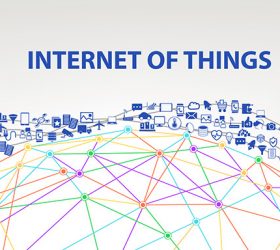Industrial Internet of Things (IIoT) is arguably one of the most talked about topics in the technology world today. From changing consumer habits where consumers are using multiple devices to offering an innovative new age product that works and connects with multiple devices exchanging real-time data, IoT is today impacting almost every industry.
The advancements in IoT has led to the birth of the Industrial Internet of Things (IIoT) resulting in IoT industrial automation. As industrial IoT solutions become more popular across industry verticals including manufacturing and other industries there has been a rise in the various industrial IoT platforms across the tech world. More and more companies are today looking to embrace an IoT design for better planning, execution, and be future ready while leveraging new age technologies.
An overview of IoT and IoT solutions
Share data between any number of smart devices using IoT!
Before getting into the details of IoT and IoT industrial automation, it is important to have a core understanding of IoT. Technically IoT is a network of various physical objects or things that communicate with each other and have the capability to exchange and collect data. These things or objects are embedded with electronic sensors or have a network connection capacity allowing them to communicate with other devices.
Effectively IoT allows data to be shared between any number of smart devices embedded with sensors. So for example a production line can get input from machines in the production line, cars can communicate with mobile devices or wearable devices like fitness trackers or airlines can remotely monitor and optimize plane performance using IoT.
Core essentials when building an IIoT Strategy
With multiple advantages of IoT allowing for better tracking and communication between devices, it is no surprise that enterprises today have a burning desire to develop an IoT solution customized for their need. Before an enterprise braces for any kind of industrial IoT solution, here are some core essentials to make a smooth IoT development strategy.
Significance of IIoT Security
The basic of IoT is interconnection and data exchange between multiple devices. As a result enterprises collect data which is beyond the traditional limit of IT boundaries in most cases. Safeguarding the high volume of real-time communication data remains essential for the enterprise. Use of encryption for all sensitive data and building risk mitigation info systems must go hand in hand with IoT development.
Solutions for streamlining data
Before planning a mitigation process for IoT industrial automation know that IoT applications accumulate high volume of data than traditional batch processing can manage. Businesses should involve tools that have the capacity to stream continuous data feeding large chunks of regular data and extraction of desired information.
Using an apt IIoT development platform
There are various IoT development platforms that an enterprise can opt for. Since anIoT platform is responsible for all development, deployment, and management of IoT applications, a platform selection should be done only after due diligence or in collaboration with an IoT developer service company.
Understanding IIoT application development
IoT applications have a significant role of capturing, collecting, and interpreting vast amounts of data for the enterprise. Care must be exercised when developing IoT applications for the business and any handling interruptions or connectivity gaps can defeat the purpose of IoT mitigation.
The effective use of IIoT Cloud
As one of the objectives for industrial IoT automation is to ensure global operations are enabled from day one, the use of cloud services is an essential trait in IoT deployment. Selection of a cloud infrastructure IT management service provider plays an important role in all IoT automation plans.
Essentials to developindustrial IoT solutions for your business
A core essential for IoT development strategy is to hire the services of an IoT service provider. Industrial IoT solutions can be financially draining and require expert mitigation solutions. Being in the initial stages of growth involving an IoT service provider, having the expert services of someone working on various IoT platforms is a definite advantage. Also a service provider as a strategic partner paves the way for further IoT ecosystem partnerships.
Moving or developing an IoT ecosystemrequires dedicated effort but at no point should the business lose its focus on the value it brings to itscustomers. Everything from cost savings to improved asset utilization adds value to the customer. All product development opportunities once a business decides to adopt IoT must therefore underline a common goal of serving the customer by adding value to the product or service.
